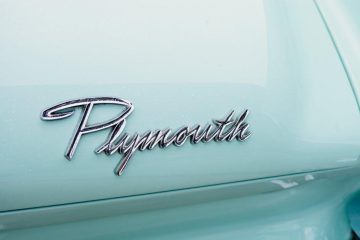Table of Contents
- Exploring the Legacy of the Plymouth GTX Muscle Car
- Design and Features that Defined the Plymouth GTX Era
- Performance and Engine Options of the Iconic Plymouth GTX
- Restoration Tips for Classic Plymouth GTX Enthusiasts
- Investing in a Plymouth GTX: What Collectors Should Know
- Q&A
- Insights and Conclusions
Exploring the Legacy of the Plymouth GTX Muscle Car
The Plymouth GTX, a classic icon of American muscle, first roared onto the scene in the late 1960s. Recognized for its powerful performance and sleek aesthetics, it was originally introduced as the “gentleman’s muscle car.” With its refined design and luxurious features, the GTX distinguished itself from many of its contemporaries, blending power with sophistication. Beneath its hood lay a thundering engine built to command the road, making it a favorite among muscle car enthusiasts. Over the years, its reputation has only grown, with collectors eager to own a piece of automotive history that embodies both strength and style.
One cannot discuss the evolution of the GTX without mentioning its impressive specifications that made it a standout. The vehicle’s engine options, particularly the 426 Hemi V8, were engineered for performance, delivering unparalleled horsepower. The combination of a robust engine, a sturdy frame, and an aerodynamic body allowed the GTX to achieve remarkable speeds, setting new benchmarks for muscle cars of its era. Additionally, the model was offered with customizable features, ensuring that each vehicle felt unique to its driver:
- Performance Suspension - Enhanced handling and stability.
- High-Impact Paint Colors – Vibrant hues like Limelight and Panther Pink.
- Optional Rear Spoilers – For better aerodynamics.
| Model Year | Key Feature | Engine Options |
|---|---|---|
| 1967 | Debut with luxurious interior | 440ci V8 |
| 1969 | Air Grabber Hood | 440ci V8, 426 Hemi |
| 1971 | Chrysler E-Body Swap | 440ci Six-Pack, 426 Hemi |
Today, the Plymouth GTX remains a symbol of high-performance engineering and timeless design, often featured in car shows and auctions worldwide. Its legacy is preserved by passionate fans and collectors who appreciate the vehicle’s historic significance and the era it represents. As a testament to its enduring appeal, the GTX continues to inspire modern automotive design, proving that a well-crafted vehicle transcends the challenges of time. Whether revving down a highway or resting in a collector’s garage, the GTX tells a story of American innovation and the unrelenting pursuit of speed and sophistication.


Design and Features that Defined the Plymouth GTX Era
The Plymouth GTX emerged as a beacon of muscle car excellence during the late 1960s and early 1970s, showcasing a distinctive design that captured the imagination of car enthusiasts. This vehicle was recognized for its aggressive stance, characterized by bold lines and a sleek profile that exuded power and performance. The exterior featured dual hood scoops, a notable design element that not only contributed to its aesthetic appeal but also enhanced the car’s performance by improving airflow to the engine. Chromed accents and a tapered rear further defined its muscle car persona, making the GTX a standout on the road.
Delving into the cabin, luxury met functionality. Unlike many muscle cars of its time, the GTX offered an interior that was both stylish and comfortable. Highlights included high-quality upholstery, wood grain finishes, and ample legroom, providing a surprisingly upscale experience for both driver and passengers. The dashboard was equipped with advanced gauges for its time, ensuring that speed and engine performance were always at the driver’s fingertips. The juxtaposition of luxurious interiors with a robust exterior made the GTX an attractive option for those who didn’t want to sacrifice comfort for speed.
| Feature | Description |
|---|---|
| Engine Choices | Available with the powerful 440 Super Commando V8 and the legendary 426 Hemi V8. |
| Suspension System | Enhanced to provide superior handling and stability during high speeds. |
The GTX’s captivations weren’t limited to aesthetics; it housed an array of formidable performance features that arguably defined its era. The vehicle came equipped with a choice between a 440 Super Commando V8 or the legendary 426 Hemi V8, both revered for their potency and reliability in delivering breathtaking speed. Coupled with an improved suspension system — designed to handle strenuous road conditions and sharp corners with grace — the GTX ensured that each journey was not only a ride but an exhilarating experience. This combination of power and precision cemented its place in the annals of automotive history as a quintessential muscle car of its time.


Performance and Engine Options of the Iconic Plymouth GTX
The thrilling under-the-hood dynamics of the Plymouth GTX have long been a talking point among classic car aficionados. Initially launched in 1967, this muscle car quickly carved out a niche for itself with its robust performance features. At its heart, the GTX offered a staggering range of engine options, including the formidable 440 Super Commando V8, which was famously rated at a powerful 375 horsepower. For those speed enthusiasts seeking even more thrills, the optional 426 Hemi engine was a game-changer, delivering a breathtaking 425 horsepower. Both engines reflected the high-performance ethos that defined the GTX.
- Standard Engine: 440 Super Commando V8
- Optional Powerhouse: 426 Hemi Engine
- Horsepower Range: 375-425 HP
Beyond sheer power, the driving experience of this remarkable vehicle was amplified by carefully engineered performance components. The production models were equipped with a TorqueFlite automatic transmission, which was revered for its smooth and responsive gear shifts. This was complemented by the option of a four-speed manual transmission, a nod to the ardent purists who desired complete control over their driving experience. The combination of ingeniously designed torsion bar front suspension and asymmetric leaf springs in the rear provided not only comfort but a heightened sense of stability, especially at high speeds.
When it came to the handling and safety features, the GTX was no slouch either. Equipped with a heavy-duty suspension system and stout brakes, this car ensured that unparalleled power was matched by exceptional control. The iconic model also came with performance tires that provided the necessary grip for adrenaline-pumping drives. Across its production years, the GTX maintained a fine balance between performance prowess and driver safety, encompassing a holistic driving experience that left a lasting impression on the golden era of American muscle cars.
| Feature | Specification |
|---|---|
| Standard Engine | 440 Super Commando V8 |
| Optional Engine | 426 Hemi |
| Horsepower | 375-425 HP |
| Transmission Options | Automatic & Manual |


Restoration Tips for Classic Plymouth GTX Enthusiasts
Reviving a classic Plymouth GTX is a labor of love, and mastering the details can make all the difference. Start by focusing on the car’s original paint and exterior finishes. Ensuring authenticity means carefully selecting the right shades and materials. Original paint codes can be found through classic car resources, which will guide you in recreating that showroom look. When sanding, aim for a gentle touch to preserve the metal beneath and avoid potential rust issues. Enlist the help of a professional if needed, as they can offer expertise in specialized techniques like wet sanding for a pristine finish.
Turning your attention to the interior, one straightforward way to refresh the cabin is to restore the original upholstery. Hunt for high-quality reproduction seat covers and carpeting that match the GTX’s factory specifications. Fabric choice is crucial—vinyl and leather should mimic the original setup not just in look but also in feel and durability. Additionally, pay attention to details such as the dashboard and gauges, replacing any worn pieces with accurate reproduction parts. Consider a skilled craftsman for steering wheel and wood grain restoration to keep the classic aesthetics intact.
Under the hood, authenticity is key, so prioritize keeping the engine components as close to the factory setup as possible. Original parts can often be sourced from dedicated classic car suppliers or enthusiast forums. Here’s a quick guide to some essential components:
| Component | Description |
|---|---|
| Engine Block | Check for original casting numbers and inspect for wear. |
| Carburetor | Opt for original or refurbished models for performance fidelity. |
| Exhaust System | Match the factory specifications for an authentic sound and look. |
These careful considerations not only enhance the car’s value but also maintain the spirit of this classic American muscle car. Remember to join online forums and local clubs for additional tips and camaraderie in your restoration journey.


Investing in a Plymouth GTX: What Collectors Should Know
The Plymouth GTX stands as a legendary nameplate in the muscle car pantheon, blending performance and luxury into a singular experience that collectors covet. Before diving into an investment, it’s critical for enthusiasts to understand the unique attributes and historical context that make this vehicle a must-have. Produced between 1967 and 1971, each model year brought subtle changes in its design and performance capabilities, making some models more desirable than others. Early models feature distinct characteristics like the Hemi engine and bold color schemes which continue to attract admirers and inflate value.
- Engine Options: V8 engines that provide raw power
- Body Styles: Sleek coupe or convertible options
- Notable Features: Option for air grabber hood, impressive torque
- Rarity: Limited production numbers increase exclusivity
| Model Year | Engine Options | Estimated Value Range |
|---|---|---|
| 1967 | 440 Super Commando | $45,000 - $70,000 |
| 1970 | 426 Hemi | $75,000 – $120,000 |
| 1971 | 440 Six Pack | $60,000 – $90,000 |
When investing in a Plymouth GTX, condition and originality are paramount. Collectors should thoroughly inspect potential purchases for matching numbers on engines and transmissions, which can significantly impact the car’s value. Restoration quality is another critical factor; an expertly restored GTX can command premium prices, but it’s essential to validate the authenticity of replacement parts. As these vehicles age, the challenges of sourcing genuine parts increase, demanding patience and dedication from collectors driven by the pursuit of automotive excellence.




0 Comments